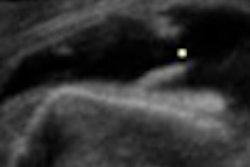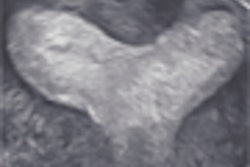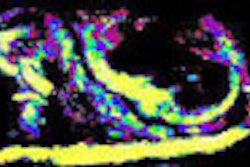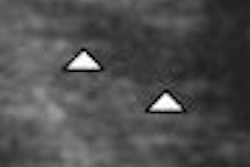Sonohysterography with endometrial biopsy may be an acceptable alternative to operative hysteroscopy in patients with endometrial pathology, according to research presented at the recent annual meeting of the American Institute of Ultrasound in Medicine (AIUM).
Hysteroscopy is currently a gold standard for diagnosis and treatment of endometrial pathology, but it requires conscious sedation or general anesthesia. Sonohysterography, however, is a single, noninvasive, effective technique for visualizing the endometrial cavity, said Dr. Maggie Tetrokalashvili of Nassau University Medical Center (NUMC) in East Meadow, NY. She presented the research during a scientific session at the San Diego meeting.
"It's sensitive, specific, and accurate, and is better than unenhanced ultrasound," she said.
Sonohysterography employs saline solution as a contrast medium for evaluation of the uterine cavity during transvaginal ultrasound, and it can be performed in an outpatient setting. In addition, it's more comfortable for patients, doesn't require anesthesia, and is cheaper than hysteroscopy, Tetrokalashvili said.
To compare the diagnostic accuracy and treatment efficacy of operative hysteroscopy with sonohysterography and endometrial biopsy, a study team from NUMC, New York Downtown Hospital in New York City, and Infertility in Athens, Greece, conducted a study using 99 patients with suspected endometrial pathology.
Of the patient set, 50 were randomized to undergo hysteroscopy, while 49 received sonohysterography with biopsy. Sonohysterography was performed using a P catheter with ports for flexible biopsy forceps and brushes, while hysteroscopy was conducted using standard equipment from Karl Storz.
The researchers discovered that endometrial pathology was successfully visualized and treated in 42 of 49 patients (86%) in the sonohysterography group, compared with 48 of 50 patients (96%) in the hysteroscopy group. Hysteroscopy yielded better results in treating submucosal myomas, she said.
The study team encountered some technical problems with the sonohysterography and biopsy technique, including inadequate visualization of the cavity in some cases, normal saline leakage, and an inability to perform biopsy or to entirely remove the endometrial polyp. However, partial polyp destruction was achieved in all cases, she said.
Sonohysterography with endometrial biopsy could be an acceptable alternative to hysteroscopy, Tetrokalashvili concluded.
"However, long-term follow-up of these patients is needed," she said.
By Erik L. Ridley
AuntMinnie.com staff writer
May 5, 2008
Related Reading
Saline infusion sonohysterography effective for infertility workup, December 29, 2006
3D: Rendering a new era, May 2, 2005
Studies bolster sonography's value for abnormal gynecological bleeding, November 5, 2004
3D ultrasound poised to revolutionize pelvic imaging, September 9, 2004
TVC US on par with SHG for spotting endometrial polyps, August 3, 2004
Copyright © 2008 AuntMinnie.com



















